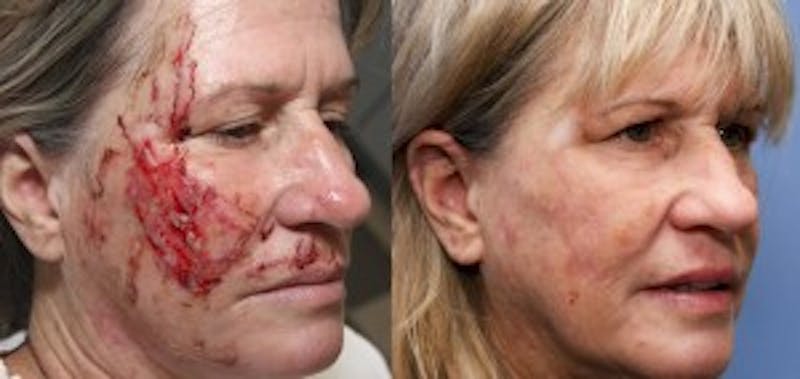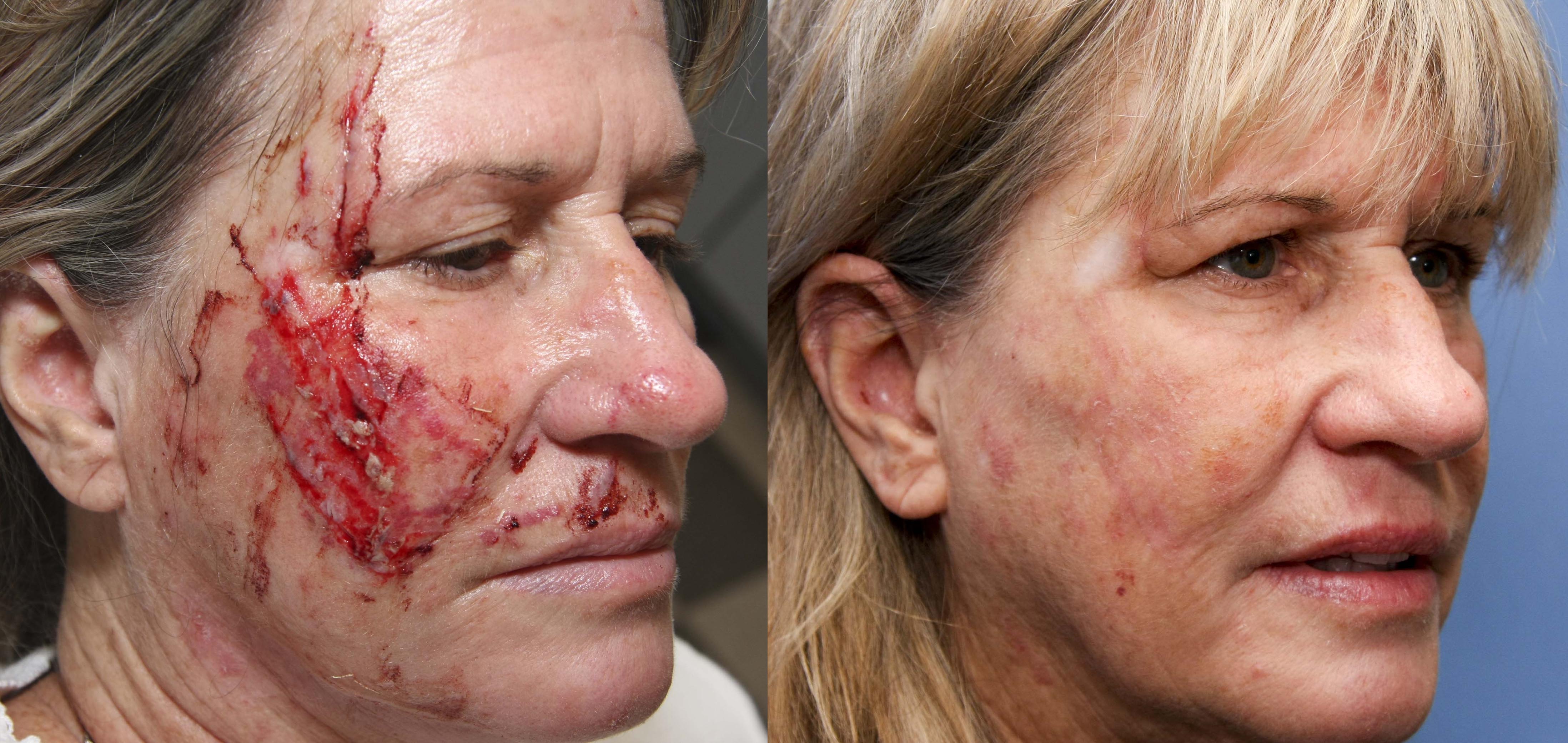
* Individual results may vary. Refer to disclaimer below.
I get frequent calls about scar treatments in my office. People often wonder what can be done to minimize or improve scars. To better answer that broad question I’d like to explain some concepts about wound healing and scar formation.
Scars are the results of our bodies’ natural response to a skin injury. When our skin is damaged the body commences the process of wound healing, which has three distinct phases: inflammatory, proliferative, and remodeling. The inflammatory phase begins immediately after injury and lasts about one week. This phase stops bleeding and cleans the wound. The proliferative phase lasts from 7 days- 4 weeks after injury. During this phase new collagen is produced and the wound gains strength. From week 4 onwards the process of remodeling takes place whereby the newly formed scar softens, lightens, and fades. This process can take up to 2 years or longer to reach final a result. The resultant scar will only ever attain 80% of the original skin’s strength.
Wound healing is divided into two broad categories, primary and secondary intent. Primary intent is when a new wound is surgically repaired and the skin edges are brought back together with sutures. This typically yields the most cosmetically acceptable scar. Healing by secondary intent involves any skin injury that was not surgically repaired, but was left open to heal on its own. The cosmetic results are unpredictable although this is sometimes the best option for certain wounds.
For the purposes of scar management I like to think about scars as either new scars (less than 1 year old) or mature scars (anything older than 1 year). For new scars, I recommend a regimen that includes topical silicone treatment. Depending on the location of the scar I will recommend silicone ointment applied twice daily for 3 months or special elastic silicone sheeting that removes tension and applies silicone. Daily sunscreen for the first year can help minimize darkening of the scar. Scar massage, as directed by your physician, can help to soften and flatten a new scar. Steroid injections may also be indicated. IPL and laser resurfacing can help flatten and hide certain types of scars. I typically reserve scar revision (cutting out and re-closing) for mature scars that are not acceptable. Sometimes the original wound healed poorly and early revision is indicated.
Special scars such as hypertrophic scars and keloid scars deserve special attention. Hypertrophic scars are red and widened while keloid scars spill over the boundaries of the original injury. These scars may benefit from steroid injection, cryotherapy, and surgical excision in addition to the typical modalities.
While there is no substitute for excellent initial wound management, unacceptable scars can be revised. Many plastic surgical techniques are used in scar revision. We are trained to minimize tension across healing wounds and make incisions that are easily camouflaged. Re-orienting a scar is a favorite technique. These techniques can help improve the cosmetic outcome of an ugly mature scar. But patients must remember the process of healing takes up to 18 months or longer so the final result requires patience.
If you have a question about scar management call Dr. Cappuccino at 301-829-4110



